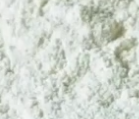Hydrogenated palm glycerides is a chemical compound obtained by a process of hydrogenating palm oil.
The name describes the structure of the molecule:
- "Hydrogenated" indicates that the product has undergone a hydrogenation process, where unsaturated double bonds present in lipids have been converted to saturated single bonds by the addition of hydrogen.
- "Palm" refers to palm oil from which the glycerides are derived.
- "Glycerides" are esters derived from glycerin and fatty acids.
Raw materials in the production of Hydrogenated Palm Glycerides.
- Palm Glycerides. Extracted from palm oil, which is a vegetable oil derived from the fruit of the oil palm tree.
- Hydrogen. Gas used in the hydrogenation process.
Step-by-step summary of industrial chemical synthesis process:
- Extraction of Palm Oil. Palm oil is extracted from the pulp of the oil palm fruit.
- Separation of Glycerides. The oils then undergo a fractionation process to separate the various triglycerides present.
- Hydrogenation. Palm glycerides are then subjected to a hydrogenation process in the presence of a catalyst, usually nickel-based, and under pressure. This process turns the unsaturated double bonds present in the glycerides into saturated single bonds, making the end product solid or semi-solid at room temperature.
- Refinement. After hydrogenation, the hydrocarbons are purified to remove any impurities.
- Quality control and packaging. The final product is tested to ensure it meets quality standards. Once approved, it's packaged and prepared for shipment.
It appears in the form of a white powder.

What it is for and where
Cosmetics
Skin conditioning agent - Emollient. Emollients have the characteristic of enhancing the skin barrier through a source of exogenous lipids that adhere to the skin, improving barrier properties by filling gaps in intercorneocyte clusters to improve hydration while protecting against inflammation. In practice, they have the ability to create a barrier that prevents transepidermal water loss. Emollients are described as degreasing or refreshing additives that improve the lipid content of the upper layers of the skin by preventing degreasing and drying of the skin. The problem with emollients is that many have a strong lipophilic character and are identified as occlusive ingredients; they are oily and fatty materials that remain on the skin surface and reduce transepidermal water loss. In cosmetics, emollients and moisturisers are often considered synonymous with humectants and occlusives.
Surfactant - Emulsifying agent. Emulsions are thermodynamically unstable and are used to soothe or soften the skin and emulsify, so they need a specific, stabilising ingredient. This ingredient forms a film, lowers the surface tension and makes two immiscible liquids miscible. A very important factor affecting the stability of the emulsion is the amount of the emulsifying agent. Emulsifiers have the property of reducing the oil/water or water/oil interfacial tension, improving the stability of the emulsion and also directly influencing the stability, sensory properties and surface tension of sunscreens by modulating the filmometric performance.
Skin conditioning agent. It is the mainstay of topical skin treatment as it has the function of restoring, increasing or improving skin tolerance to external factors, including melanocyte tolerance. The most important function of the conditioning agent is to prevent skin dehydration, but the subject is rather complex and involves emollients and humectants that can be added in the formulation.
Viscosity control agent. It controls and adapts, Increasing or decreasing, viscosity to the required level for optimal chemical and physical stability of the product and dosage in gels, suspensions, emulsions, solutions.
CAS 91744-66-0
EC number 294-631-0
Commercial Applications
Cosmetic and Skincare Products. Hydrogenated Palm Glycerides are commonly used as emollient and stabilizing agents in creams, lotions, and other skincare products.
Haircare Products. They can be used in hair conditioners and treatments to add shine and softness.
Make-up Products. Found in items such as lipsticks and concealers to enhance texture and longevity.
Food Industry. Used as a stabilizing and thickening agent in various food products.


![]() Hydrogenated palm glycerides
Hydrogenated palm glycerides